How Delivery Became the "New Normal" of the Restaurant Industry
Source: unsplash.com
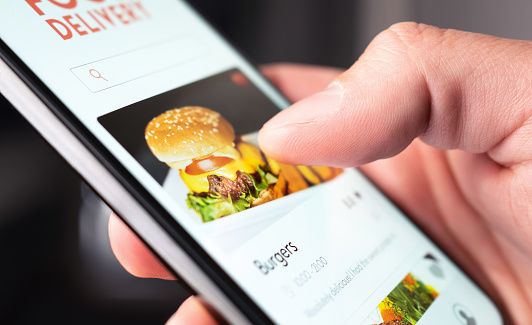

Source: unsplash.com
Source: unsplash.com
The beginning of the pandemic
When the COVID-19 pandemic hit in 2020, there was much uncertainty, including the future of many businesses. The restaurant industry was hit very hard with many restaurants closing their doors forever. But through these challenging times, new services have sprung up and are a welcome change for many.
New services that appear to be here to stay, are the increased availability of takeout and delivery service from restaurants. Large and smaller local food and grocery stores have also adapted similar order, delivery and pickup practices.
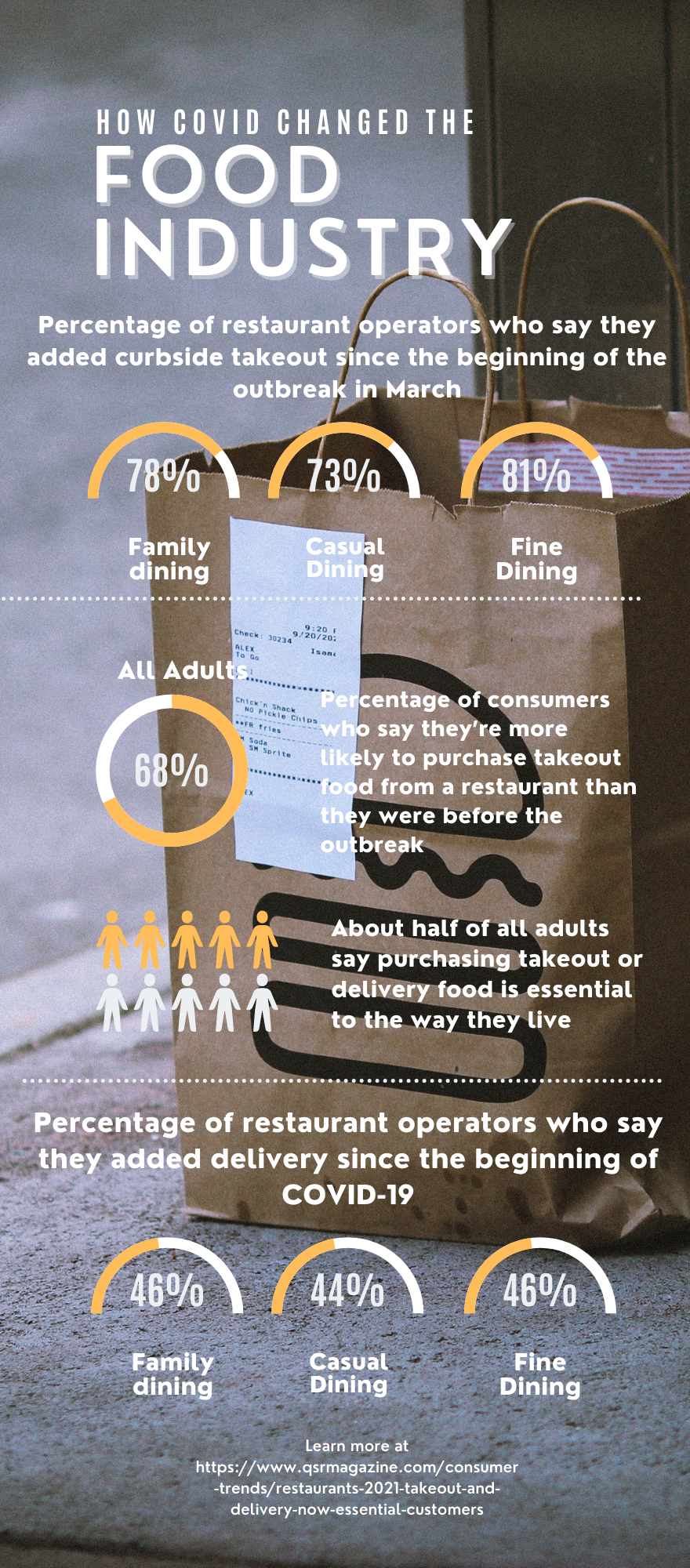
The rise of mobile delivery
Delivery apps were available for larger fast food chains such as Smash Burger, Burger King and Wendy’s before the pandemic. The most popular mobile delivery apps were DoorDash and Uber Eats.
These apps became even more popular during the lockdown and “became a lifeline for businesses during the pandemic” (New York Times). Smaller, more local restaurants depended more on patrons dining-in than doing takeout or delivery.
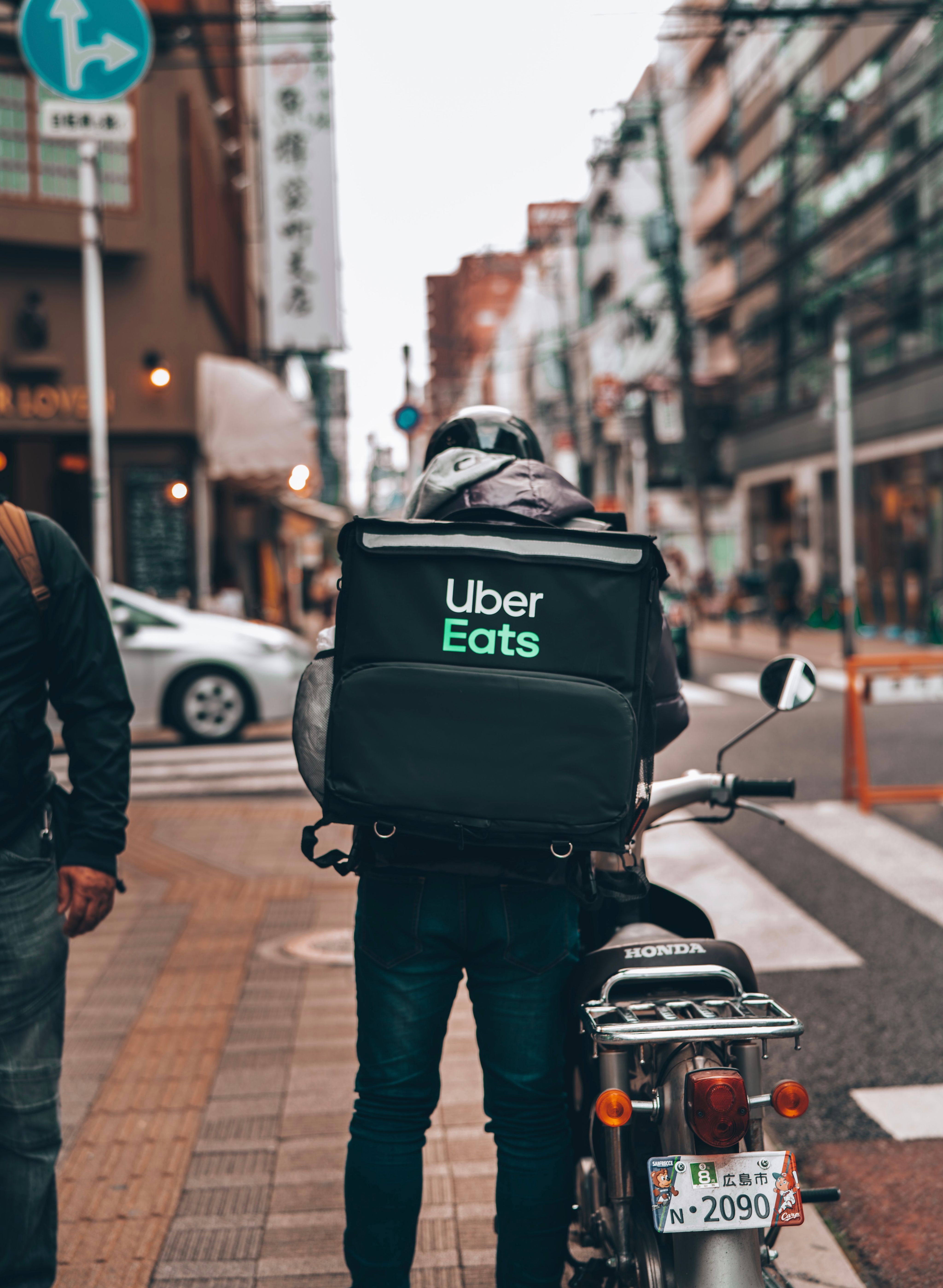
I recently conducted a poll on Instagram and asked my followers about delivery apps and if they had ever used any prior to the pandemic.
The results are below and they were quite mixed:

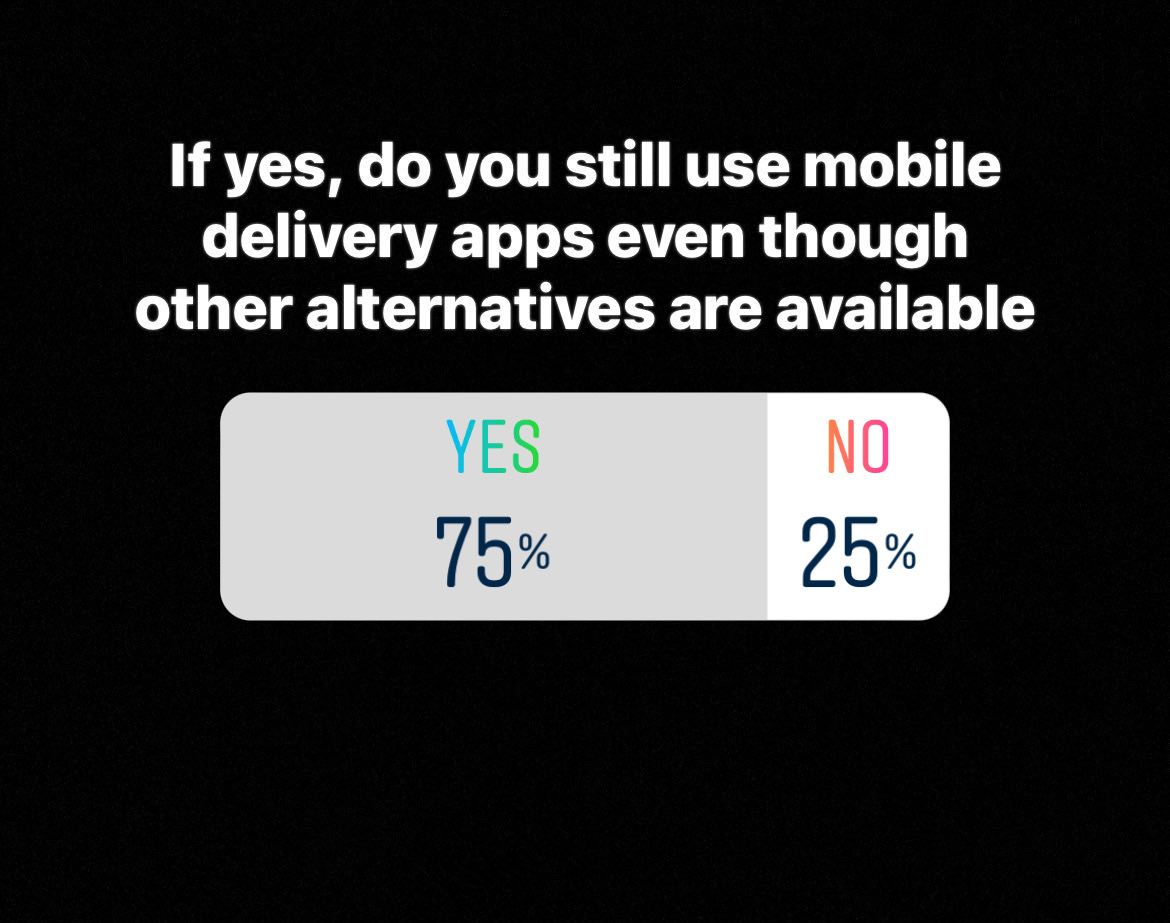
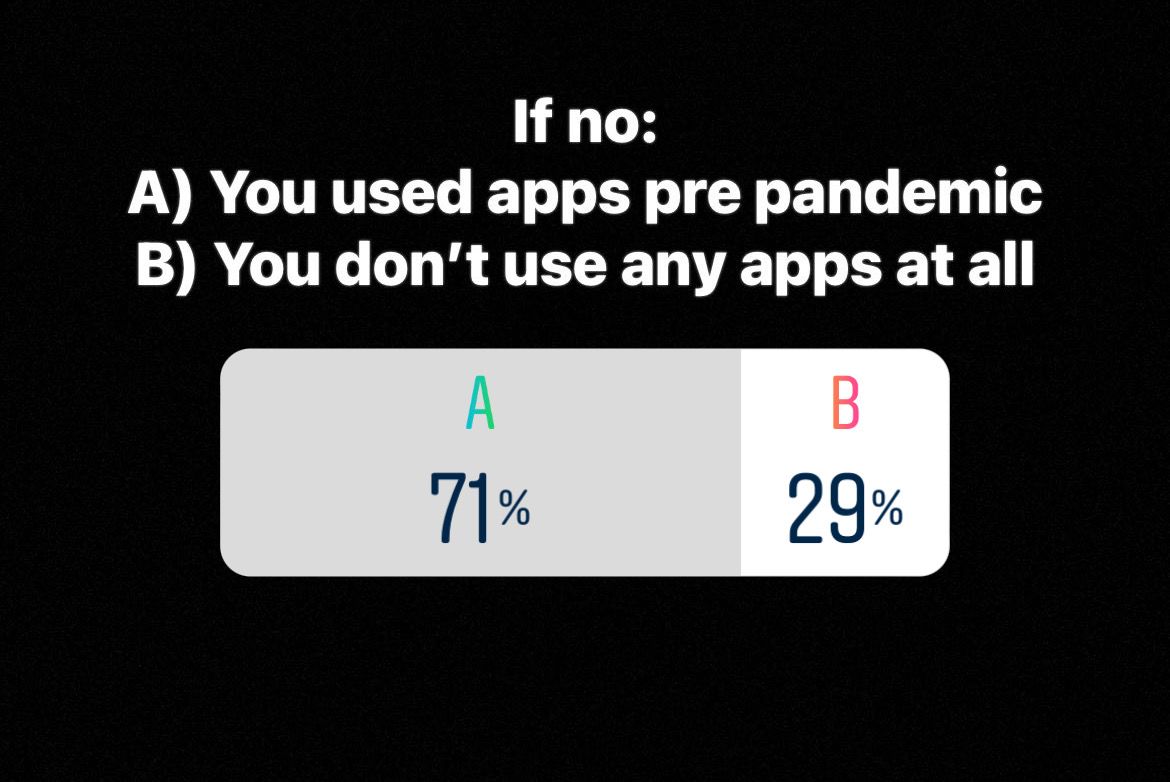
How the food industry adapted
In order to survive, many restaurants had to evolve during the pandemic. Restaurants swiftly gave an option to takeout or order through a mobile delivery app. Curbside pickup also became a very popular method.
Rising Tide, a market in Locust Valley, had to shut down in-store shopping during the pandemic. However, the market was still able to provide food to its customers.
According to founder and owner Jerry Farrell, business was booming in the first half of March 2020 due to concern that food supplies would be limited as the threat of a complete shut-down loomed. However, like everyone else in the world at that time, he and the staff were concerned people were contracting and spreading the virus. Farrell made the ultimate decision to shut down his store for in-store shopping and switched to strictly curbside pickup.
The transition to curbside pickup was not easy and only lasted for eight weeks, as it was a “laborious process”.
“The hardest part of doing curbside is we did not have a web-based platform to take care of our inventory. So, people basically were texting in an order…And then since we didn't have food service, we let go of our kitchen staff and all of our other employees became shoppers” Farrell said.
He added that the employees used Zingle, a texting platform, which was used on each employees’ own cellphone, allowing them to communicate with a customer directly when filling an order. Each employee was assigned to shop for a particular person, shopping for the items that were requested. There were some struggles using this method, however.
“…it was really, really hard for us to do and then a lot of our people who were doing the shopping were making mistakes and that caused a lot of frustration for the consumer and for us so it was an intense time” Farrell said.
With only 25 people employed, Farrell decided to close the store every Wednesday to give the staff time off. Business hours were shortened to 11am-4pm as well. This allowed the store to receive all the products in the morning and stock the shelves. Shopping for the customers was done in the afternoon.
“I think one of the things that helped us through this was knowing how much our customers appreciated that we were doing this extra effort because they didn't want to be in stores,” Farrell said.
“The other supermarkets…they stayed open. We were only doing curbside, so we had a number of people who were only shopping with us because they didn't want to go into the stores” he added.
Today, people still make orders online at Rising Tide. However, since restrictions have been lifted, people now mainly shop in the store.
“Just as much as online shopping has become a pattern for many people…most of our business comes from in-store. I’d say 90 percent” Farrell said.
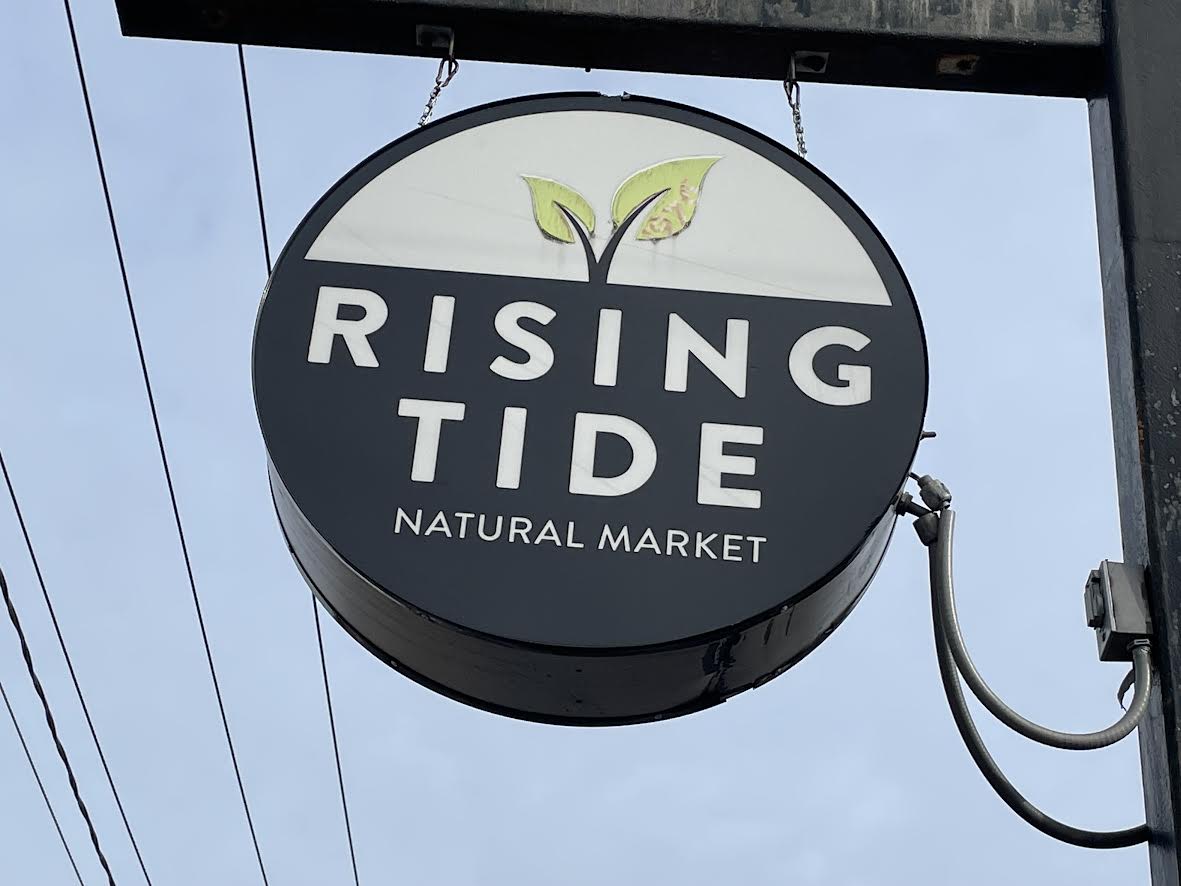
Curbside pickup was the only option for Rising Tide for 8 weeks during the lockdown. Photo credit: Lucas Pino
Curbside pickup was the only option for Rising Tide for 8 weeks during the lockdown. Photo credit: Lucas Pino
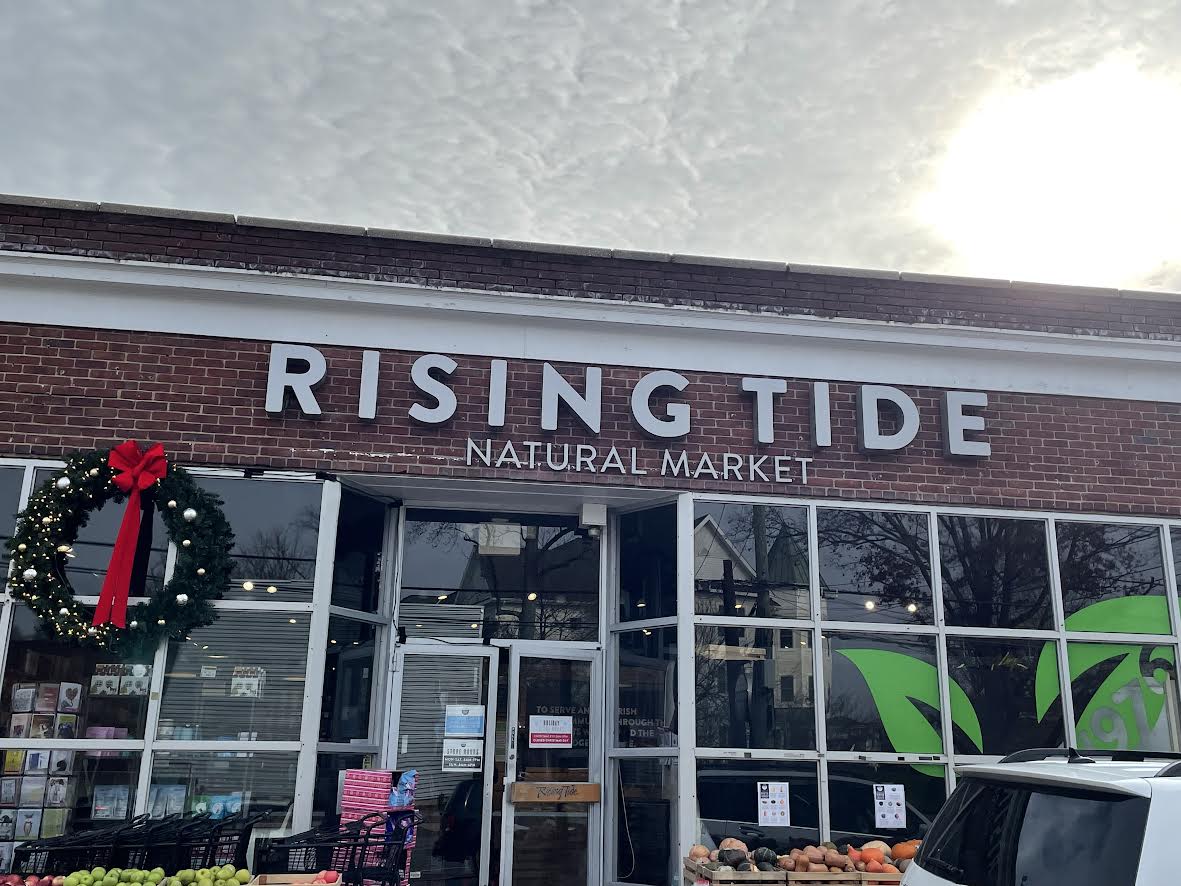
Customers had to park outside of this building for curbside pickup. Photo credit: Lucas Pino
Customers had to park outside of this building for curbside pickup. Photo credit: Lucas Pino
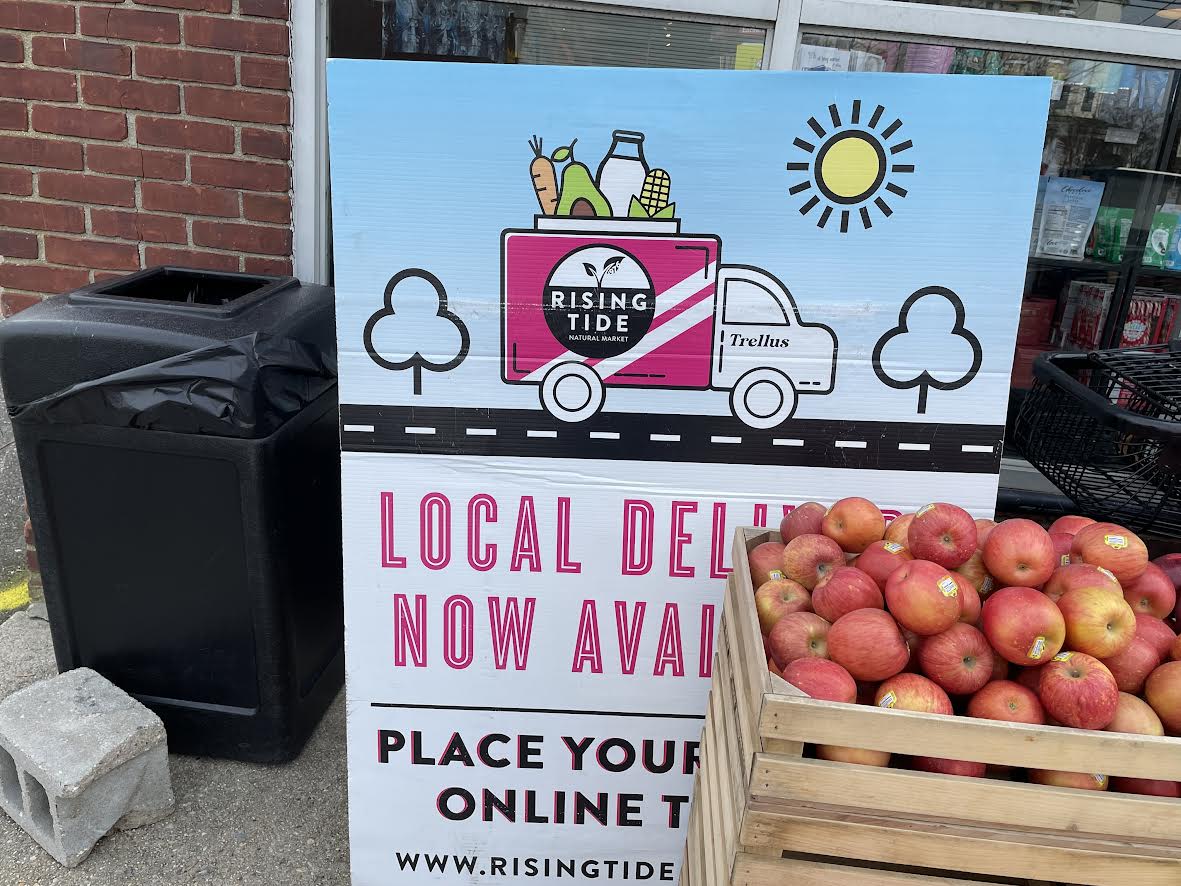
Rising Tide now offers delivery. Photo credit: Lucas Pino
Rising Tide now offers delivery. Photo credit: Lucas Pino

Rising Tide was closed for in-store shopping during the curbside pickup process. Photo credit: Lucas Pino
Rising Tide was closed for in-store shopping during the curbside pickup process. Photo credit: Lucas Pino
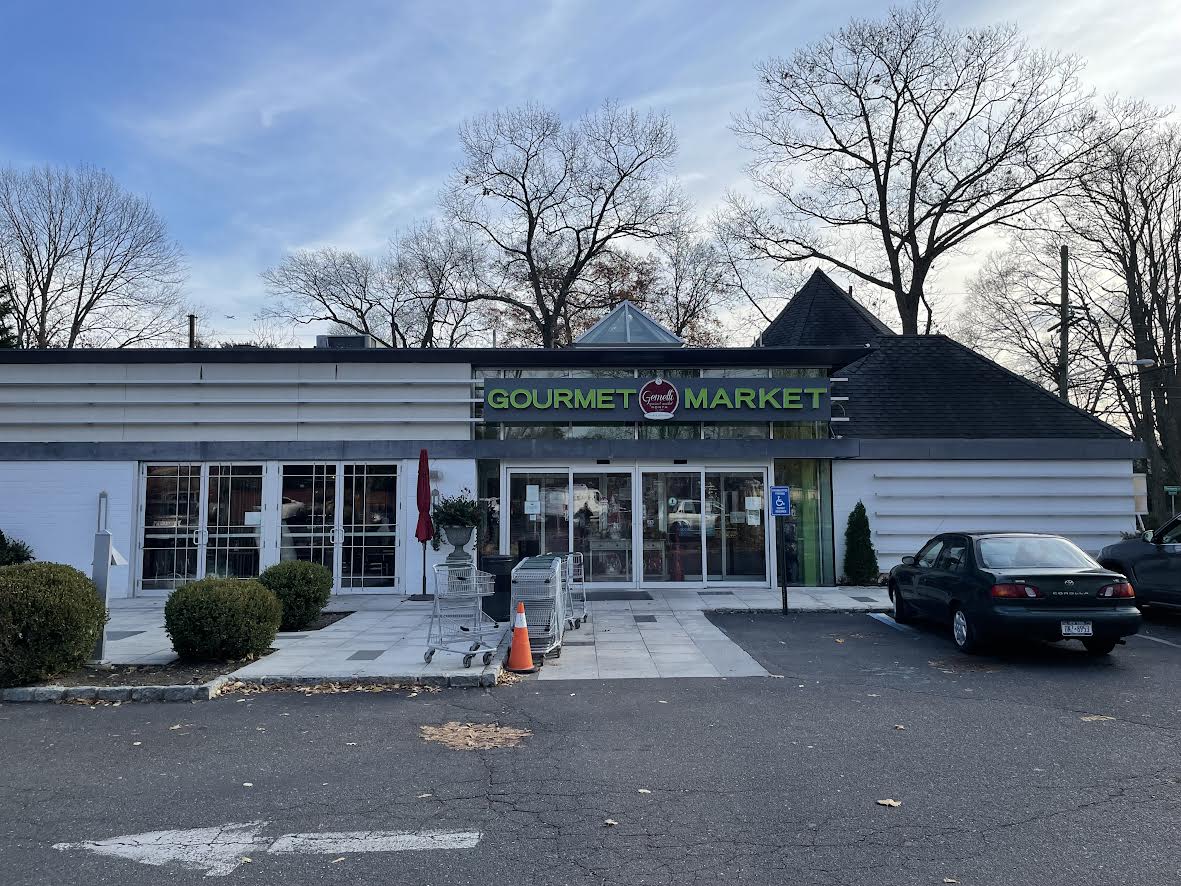
Main entrance to Gemelli, which is located in Glen Head. Photo credit: Lucas Pino
Main entrance to Gemelli, which is located in Glen Head. Photo credit: Lucas Pino
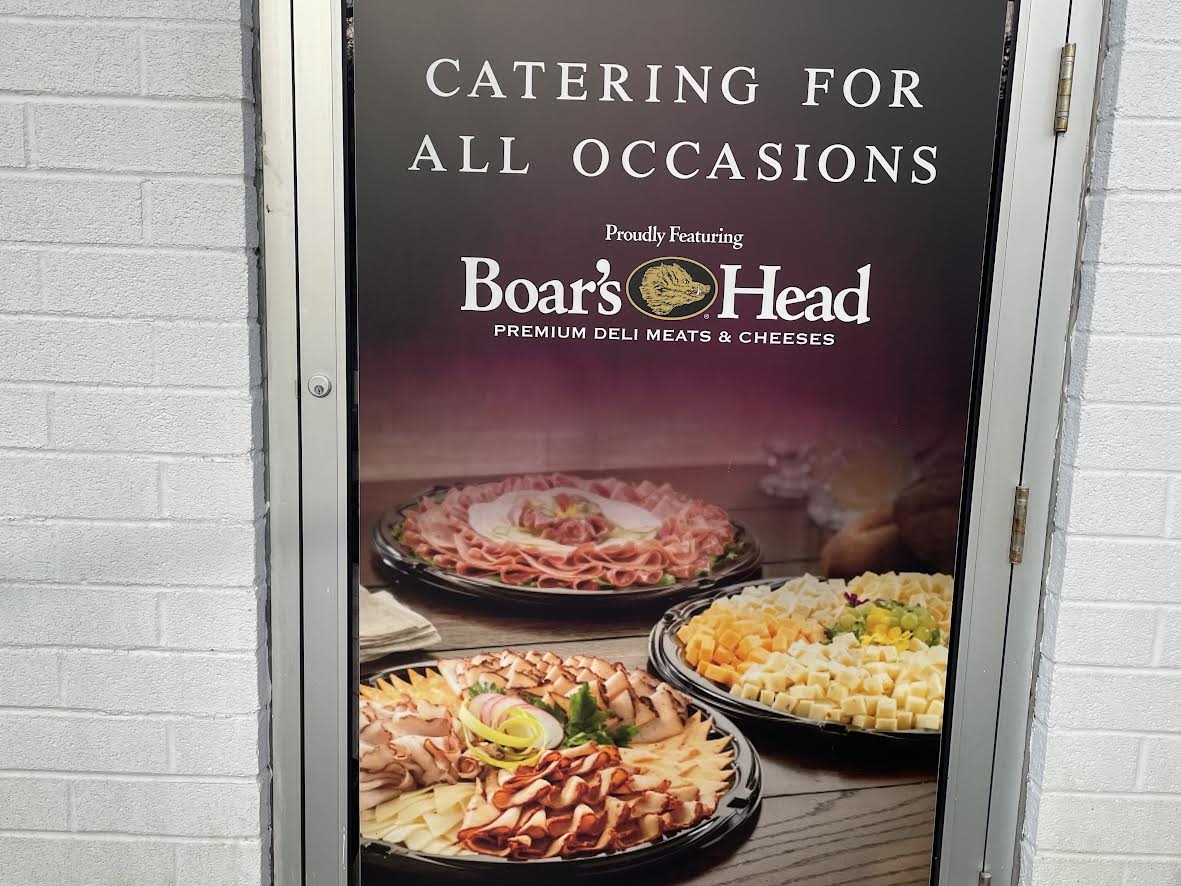
Catering was a very common option for customers before the pandemic. Photo credit: Lucas Pino
Catering was a very common option for customers before the pandemic. Photo credit: Lucas Pino
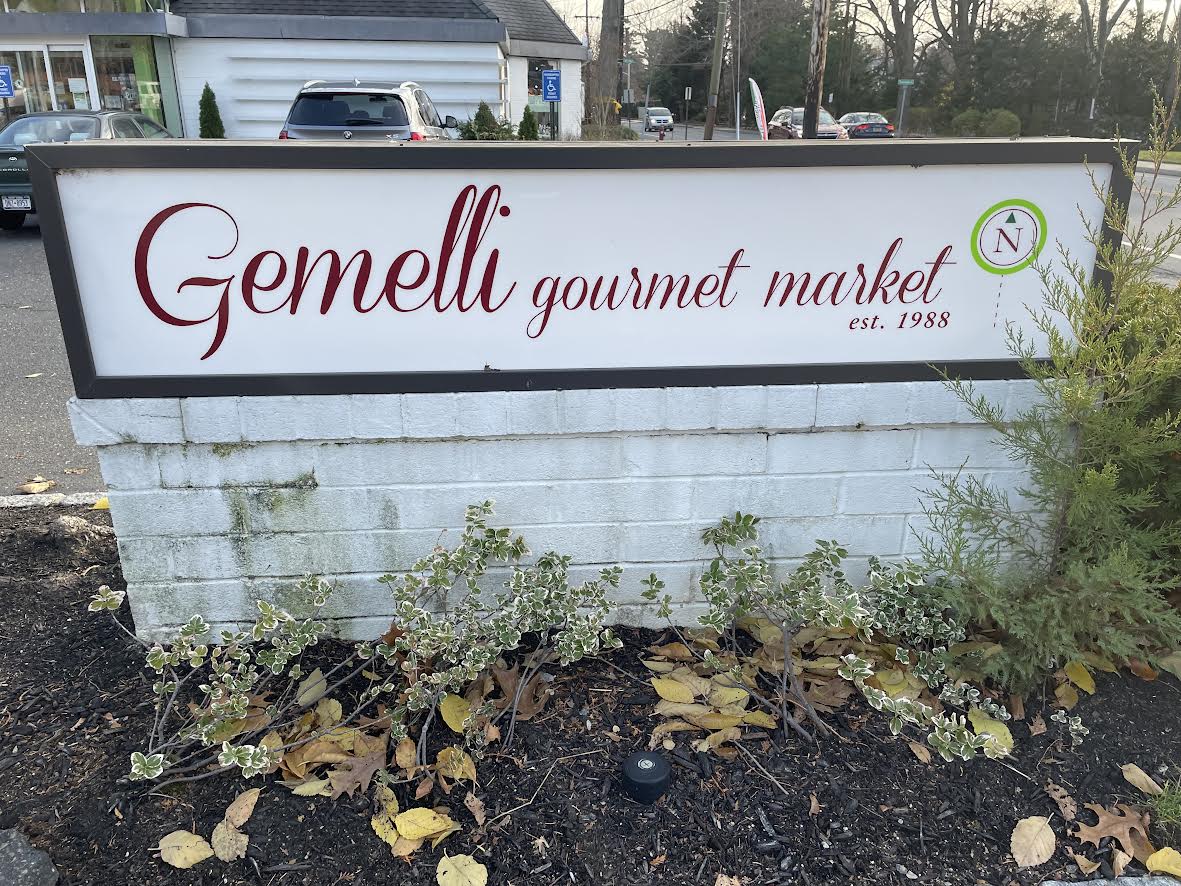
This big sign is the first thing that a person will see when they enter the Gemelli parking lot. Photo credit: Lucas Pino
This big sign is the first thing that a person will see when they enter the Gemelli parking lot. Photo credit: Lucas Pino

Gemelli sign on the side of the building. Photo credit: Lucas Pino
Gemelli sign on the side of the building. Photo credit: Lucas Pino
Another local food service provider, Gemelli, located in Glen Head, largely catered small dinners and graduation parties, as well as a small selection of groceries before the pandemic.
Since Gemelli is an essential business, it remained open throughout, providing largely pre-made meals. Adrianna Cosentino, one of the owners, explained the transition to curbside pickup during that time.
“People were nervous to come into the store. So, people would call up and tell us what they wanted. We would get their order together…and then we would run it out to their cars when they were here” she said.
Although delivery was not an option prior to the pandemic, this service was offered in a limited scope.
“…people were not having parties or anything so we were delivering grocery orders if they couldn’t get here, especially elderly people…we were delivering to their house that way they were still able to get food…” Cosentino said.
Since the restrictions have been lifted, Gemelli has seen most of its customers return to shopping in the store. However, curbside pickup still exists:
“…we are getting a few phone calls…people saying that they have COVID…not obviously as much… but we still get about 5 to 10 orders a day…” Consentino said.
How the food industry learned from the pandemic
The COVID-19 pandemic has forced millions of restaurants across the country to close permanently. The restaurants that remained open during the pandemic were forced to make changes to survive. Some of these were the addition of curbside pickup and delivery.
According to research, 60 percent of all restaurant traffic in New York City prior to the pandemic, accounted from curbside pickup, takeout, and delivery. This number increased to 90 percent at the height of the pandemic last year.
Adding these options saved many restaurants from permanently closing and while the amount of off premises has declined as people return to restaurants, this option will be long lasting.


